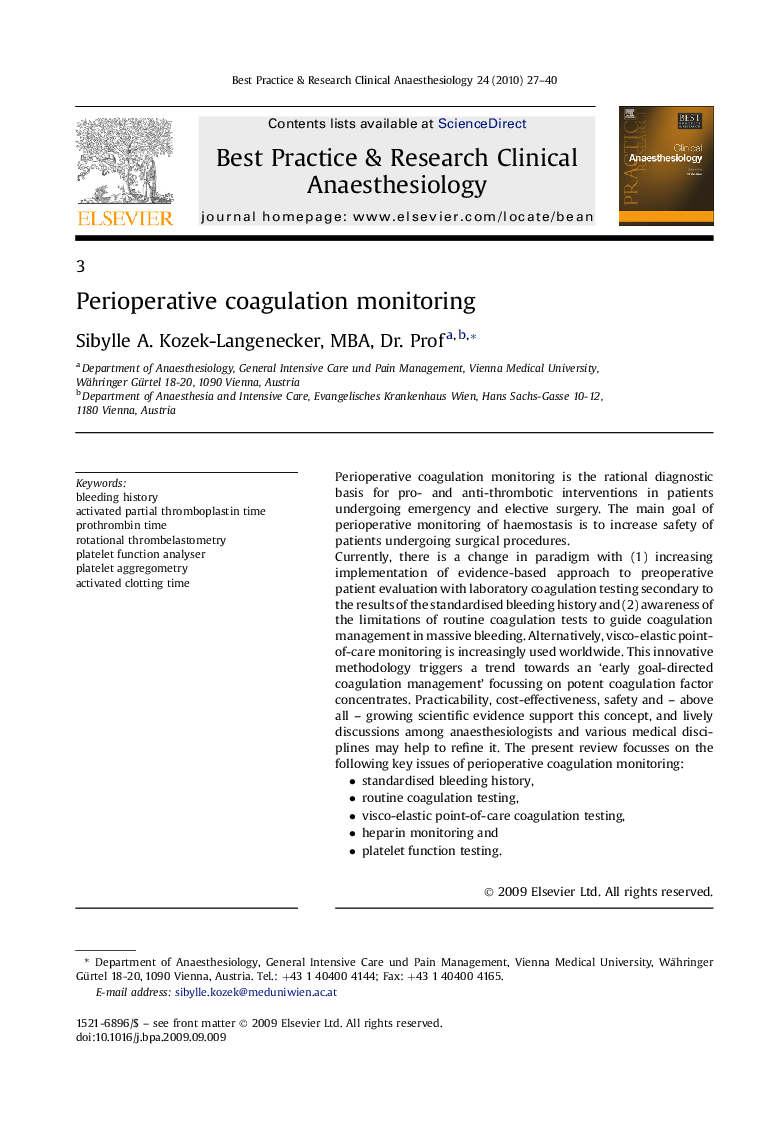| Article ID | Journal | Published Year | Pages | File Type |
|---|---|---|---|---|
| 2748628 | Best Practice & Research Clinical Anaesthesiology | 2010 | 14 Pages |
Perioperative coagulation monitoring is the rational diagnostic basis for pro- and anti-thrombotic interventions in patients undergoing emergency and elective surgery. The main goal of perioperative monitoring of haemostasis is to increase safety of patients undergoing surgical procedures.Currently, there is a change in paradigm with (1) increasing implementation of evidence-based approach to preoperative patient evaluation with laboratory coagulation testing secondary to the results of the standardised bleeding history and (2) awareness of the limitations of routine coagulation tests to guide coagulation management in massive bleeding. Alternatively, visco-elastic point-of-care monitoring is increasingly used worldwide. This innovative methodology triggers a trend towards an ‘early goal-directed coagulation management’ focussing on potent coagulation factor concentrates. Practicability, cost-effectiveness, safety and – above all – growing scientific evidence support this concept, and lively discussions among anaesthesiologists and various medical disciplines may help to refine it. The present review focusses on the following key issues of perioperative coagulation monitoring:•standardised bleeding history,•routine coagulation testing,•visco-elastic point-of-care coagulation testing,•heparin monitoring and•platelet function testing.
